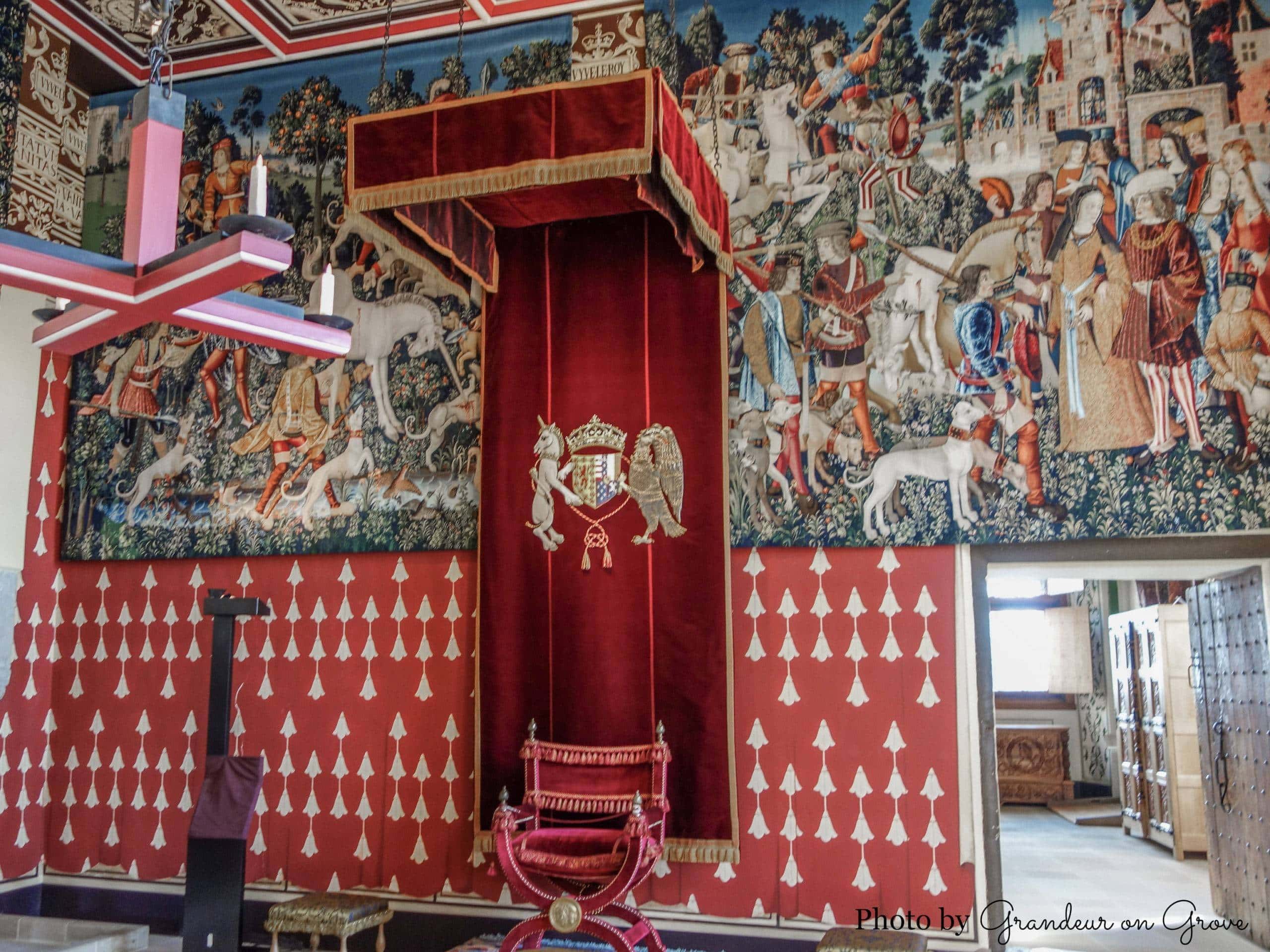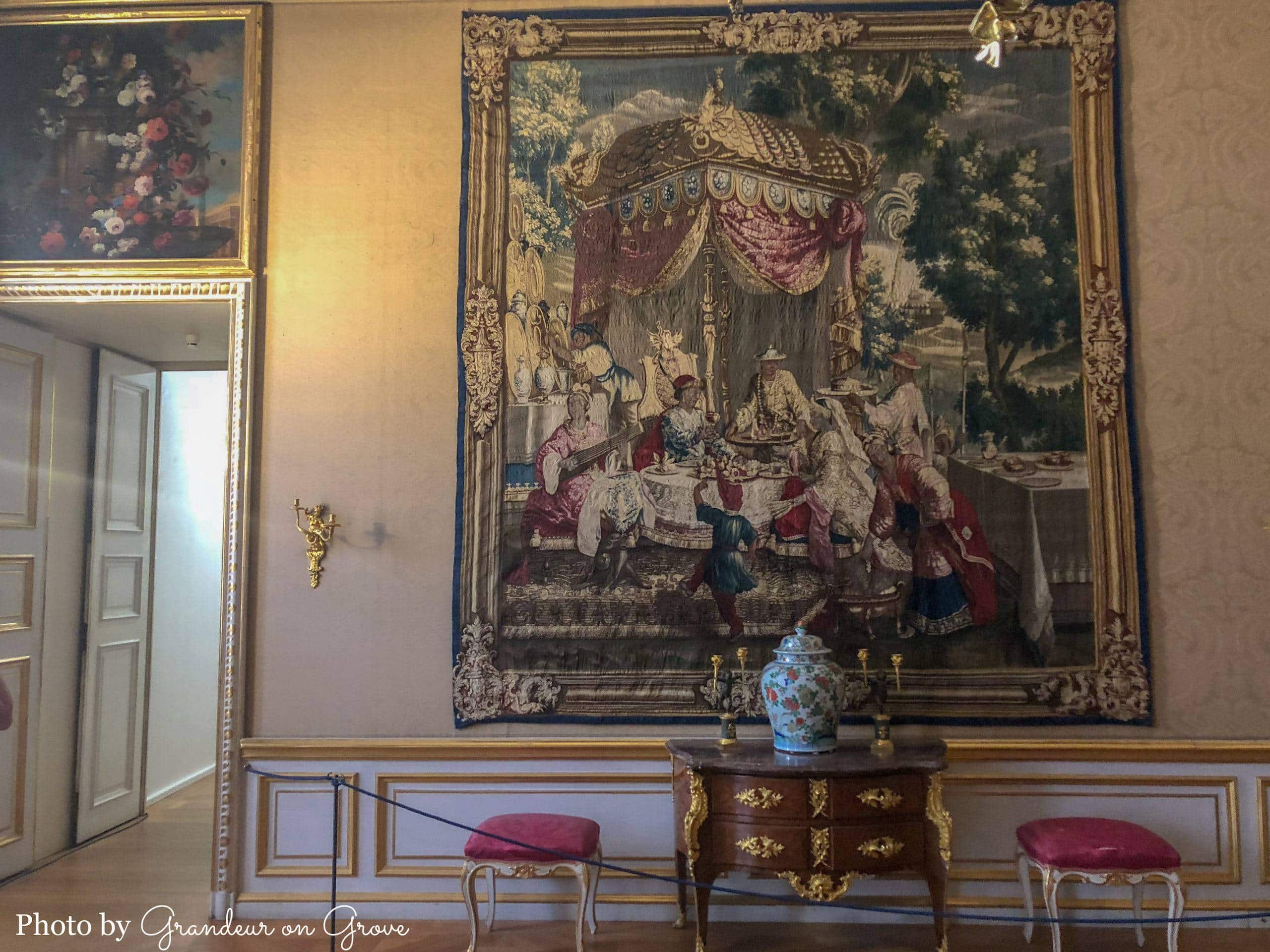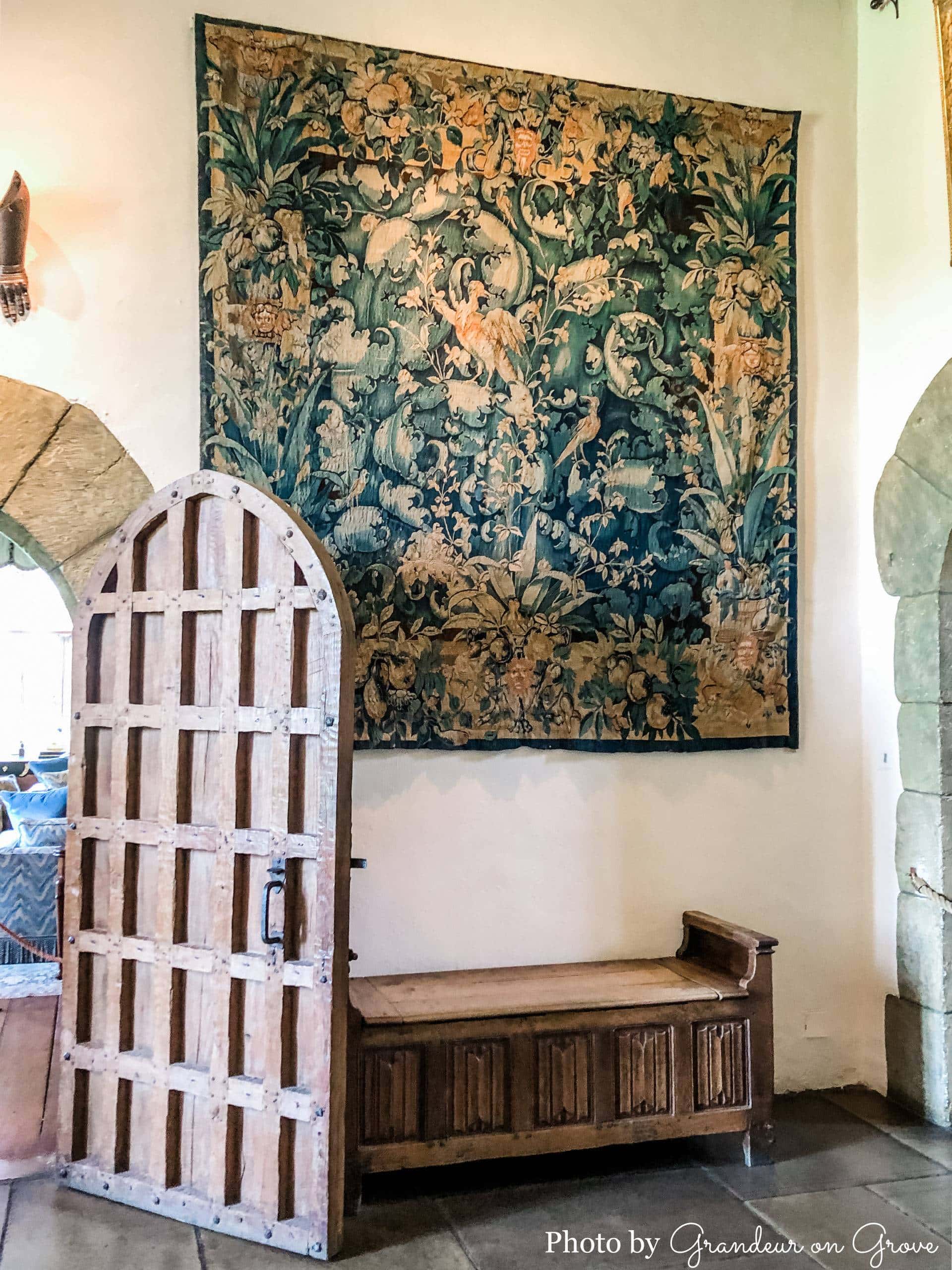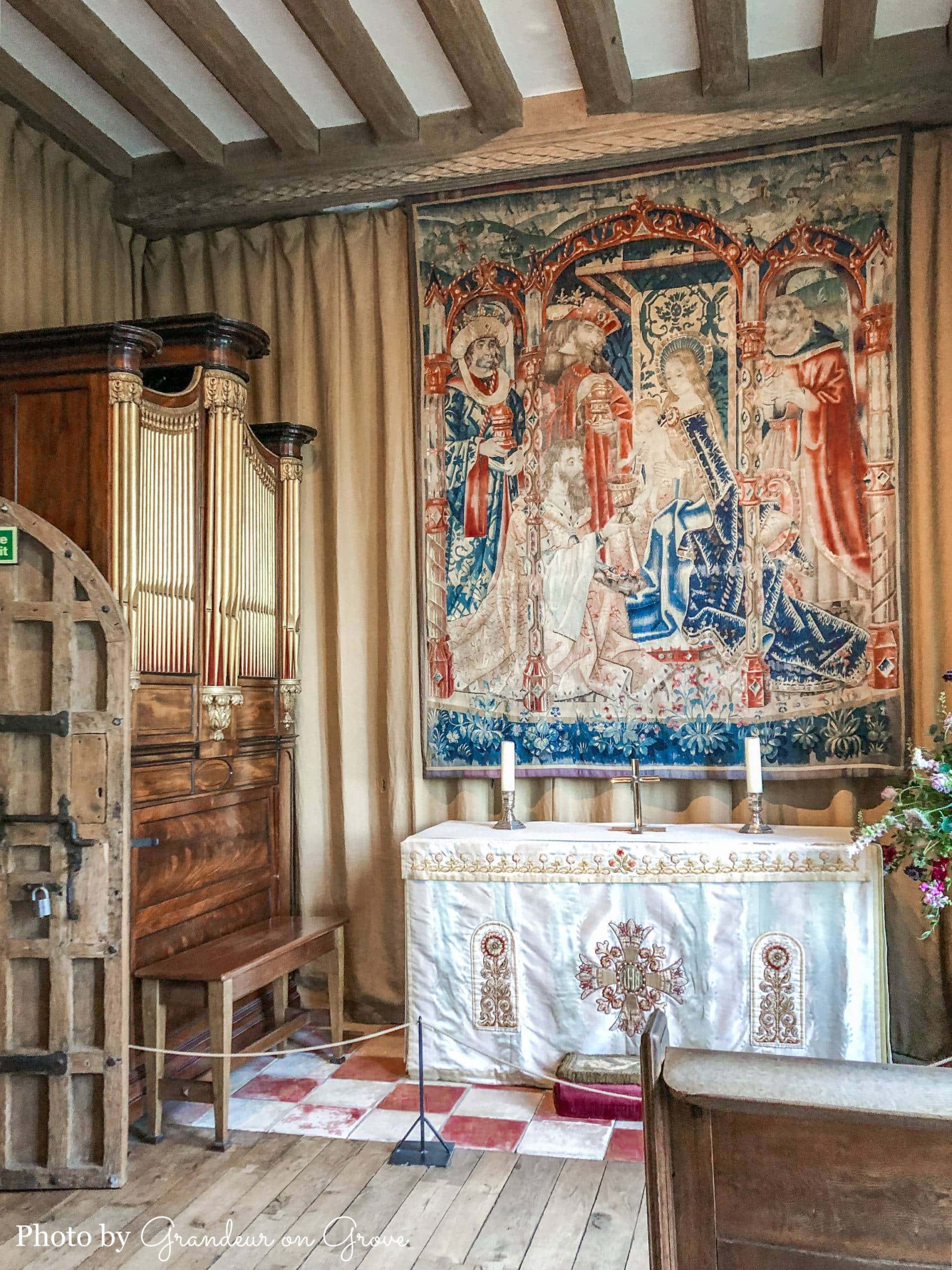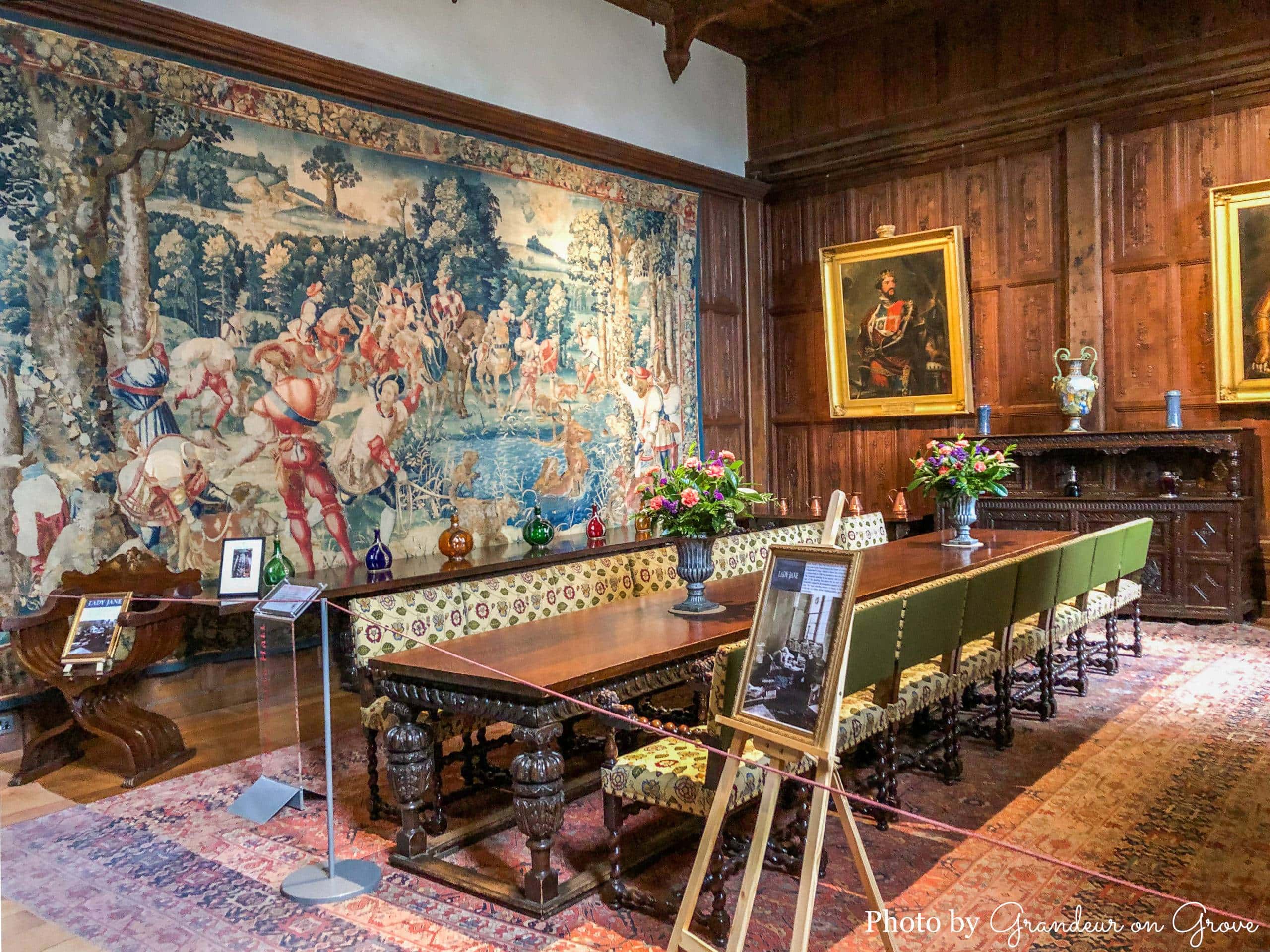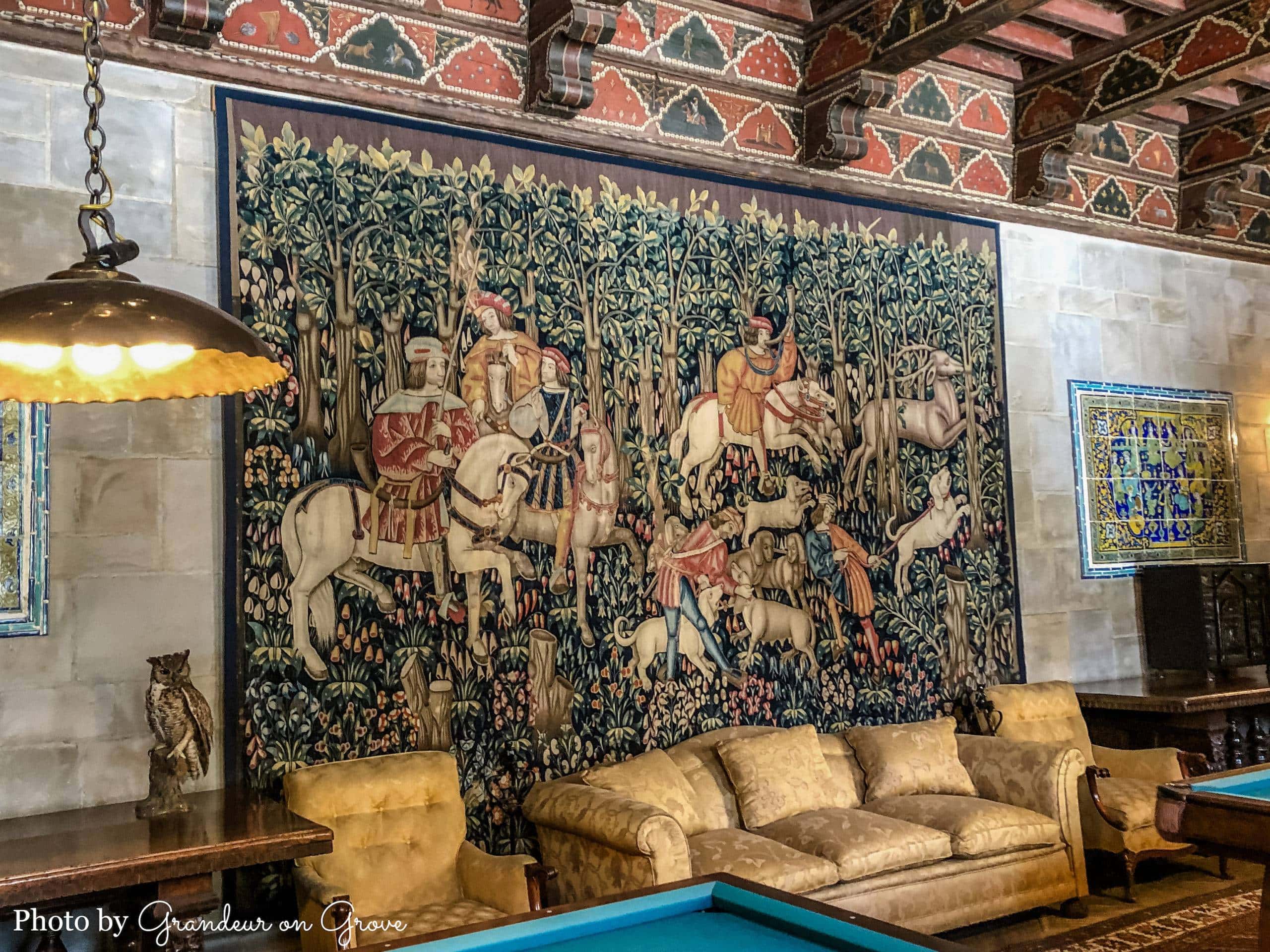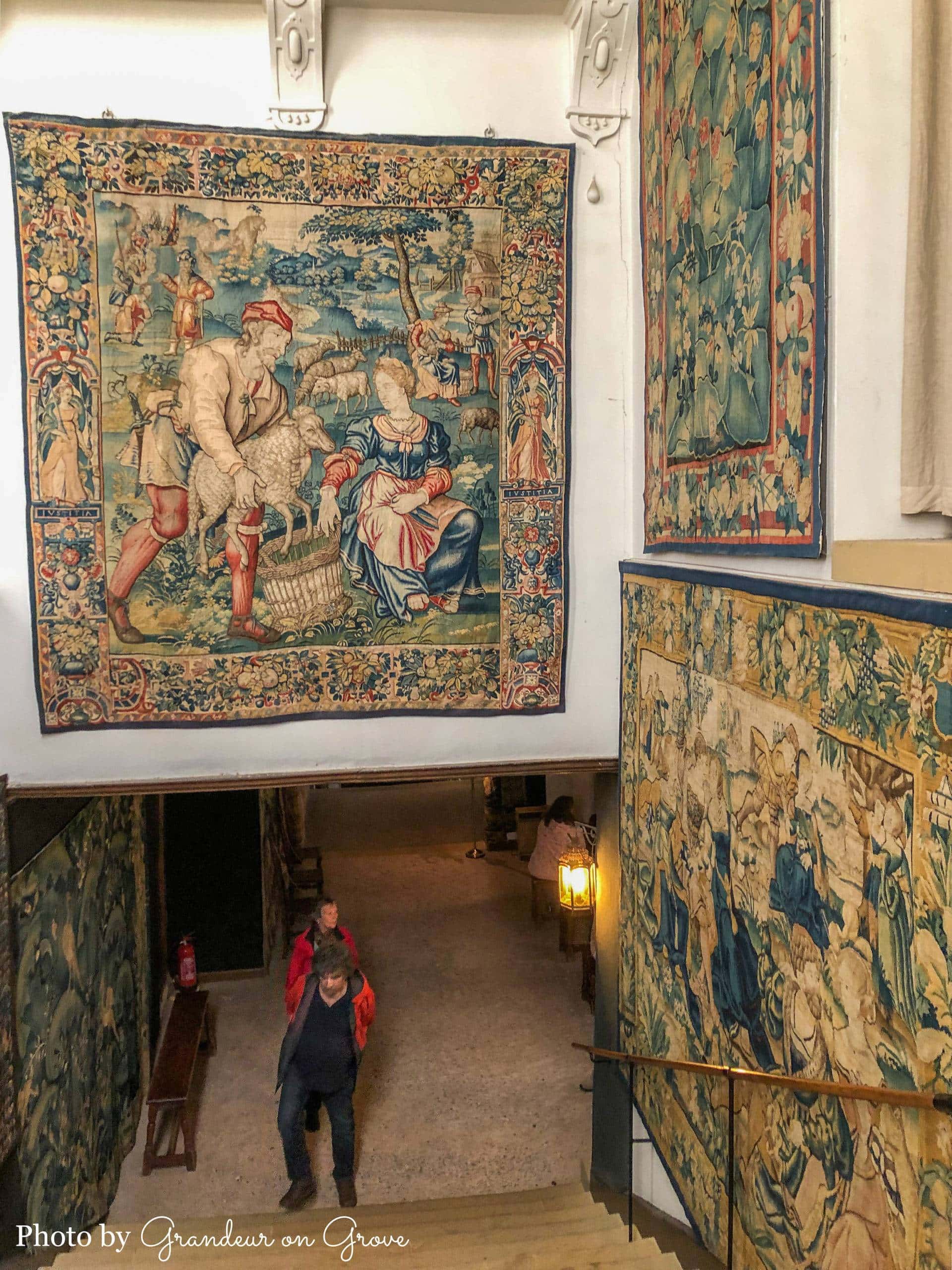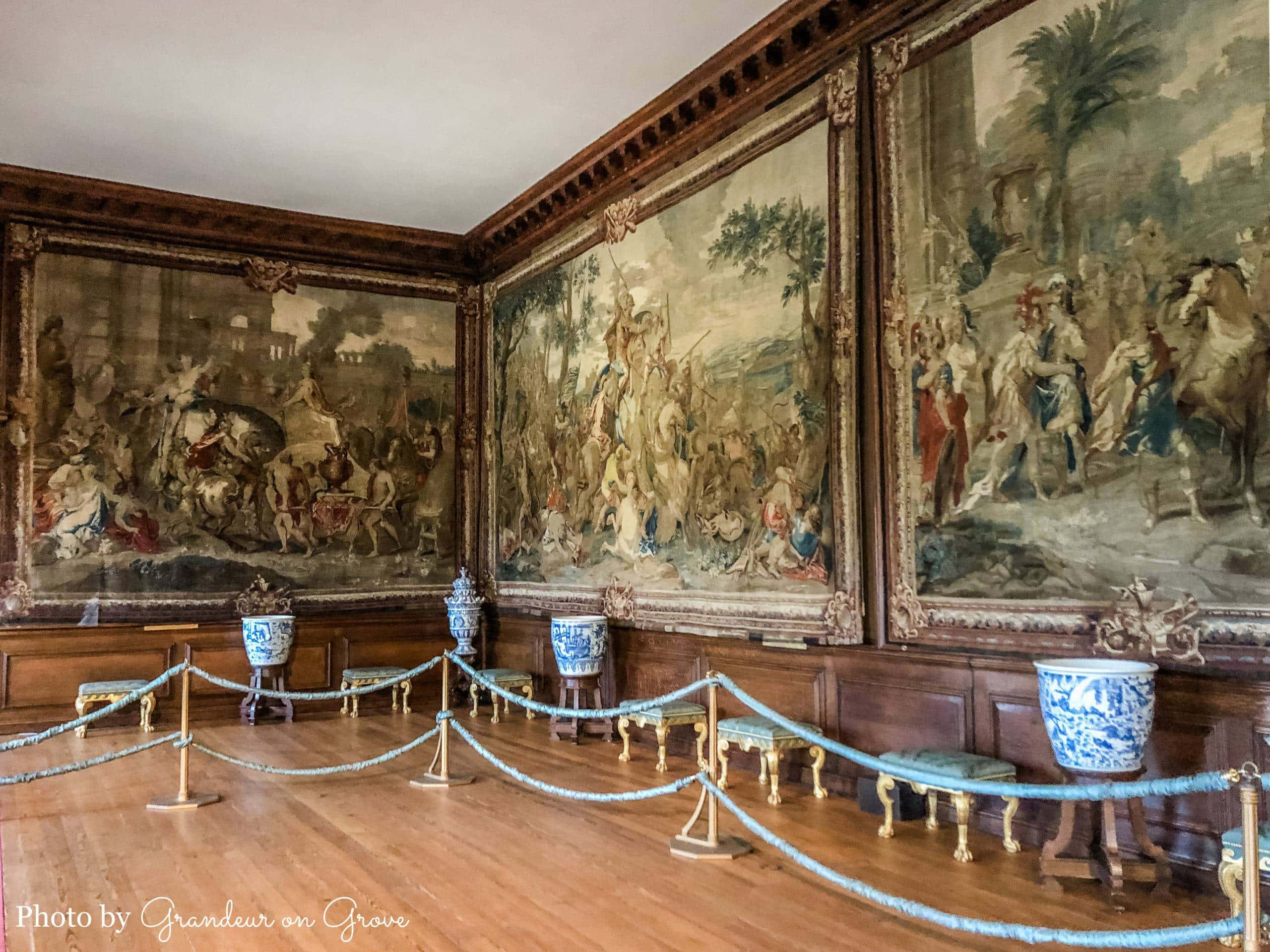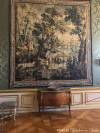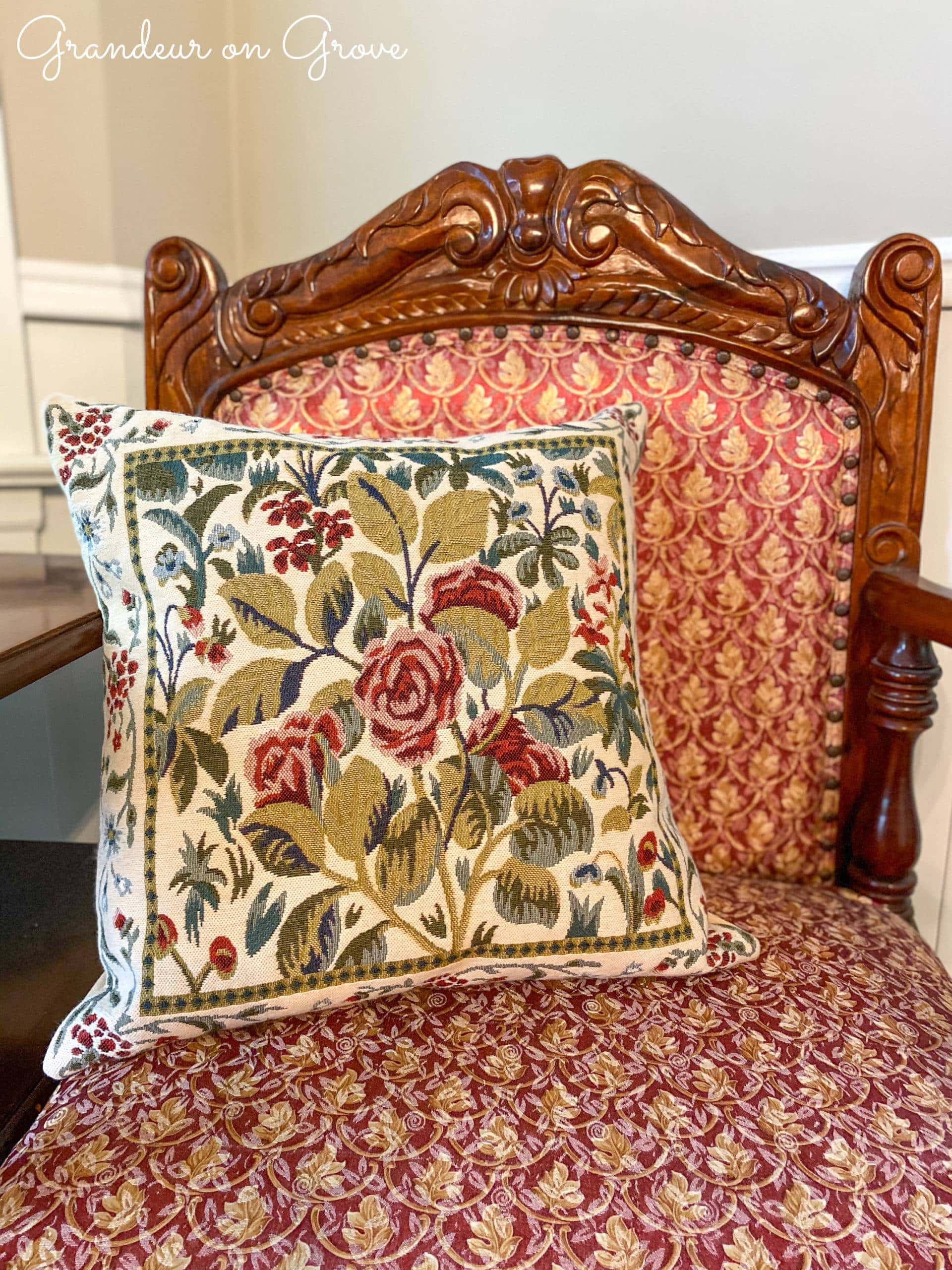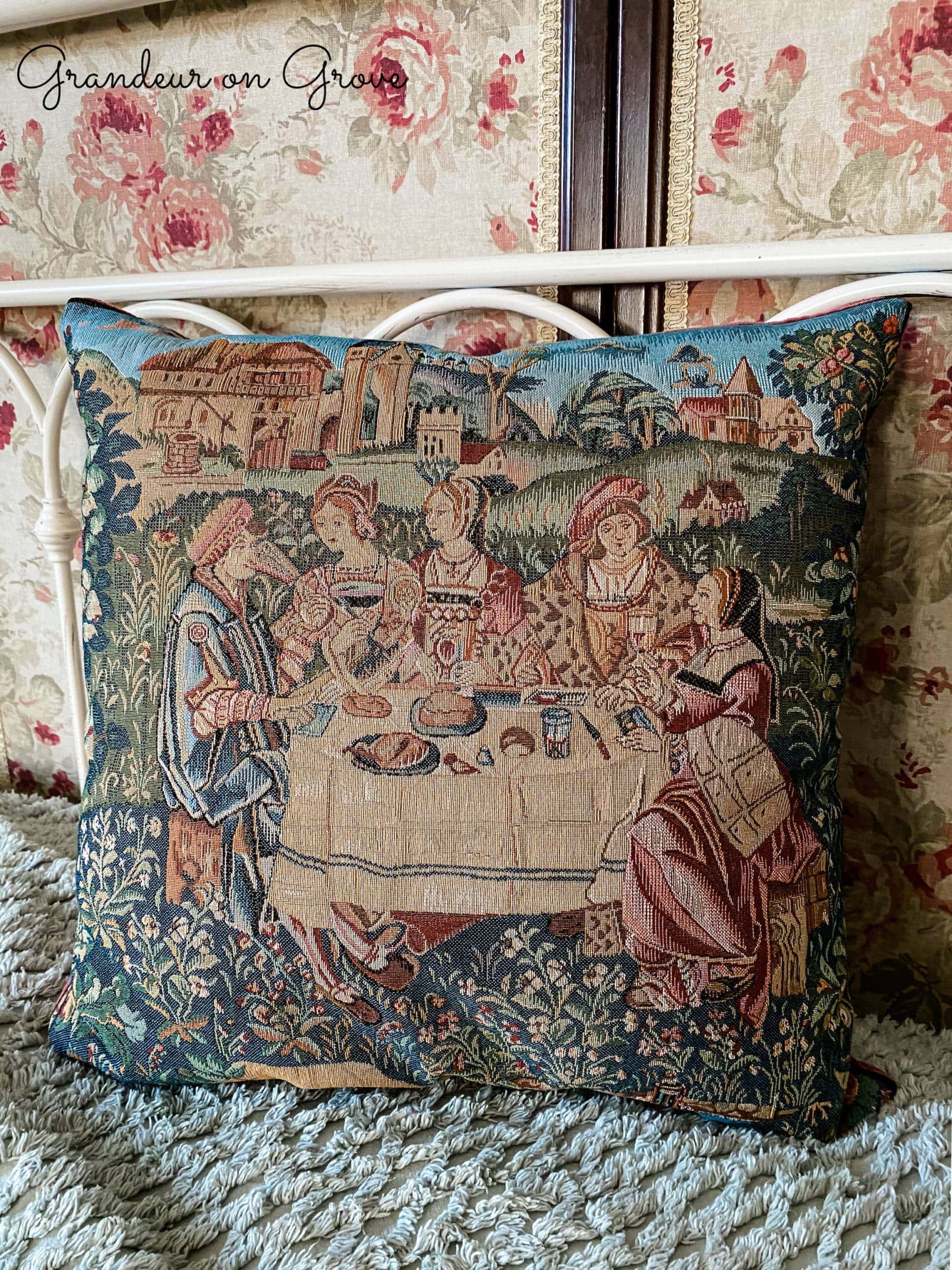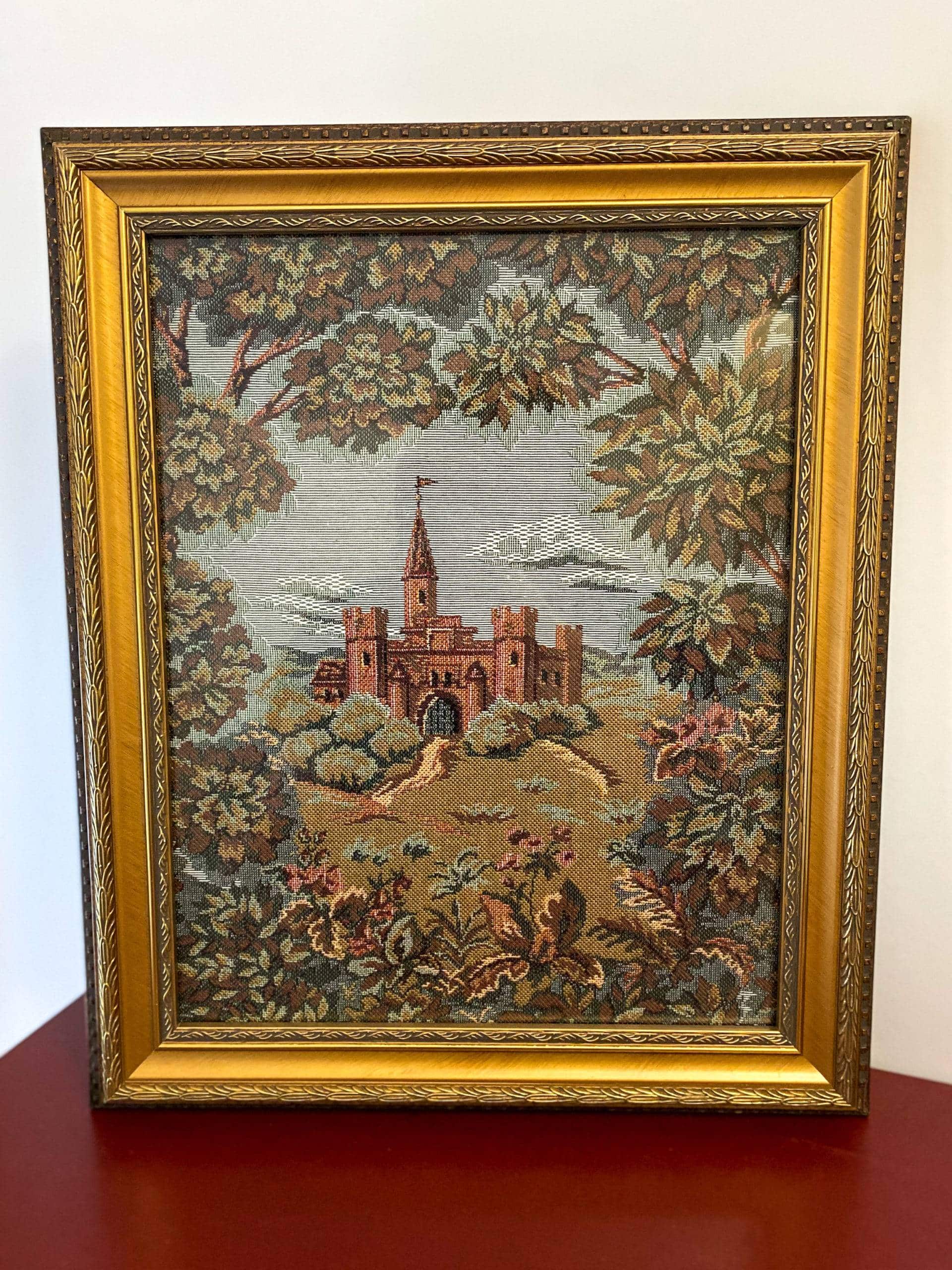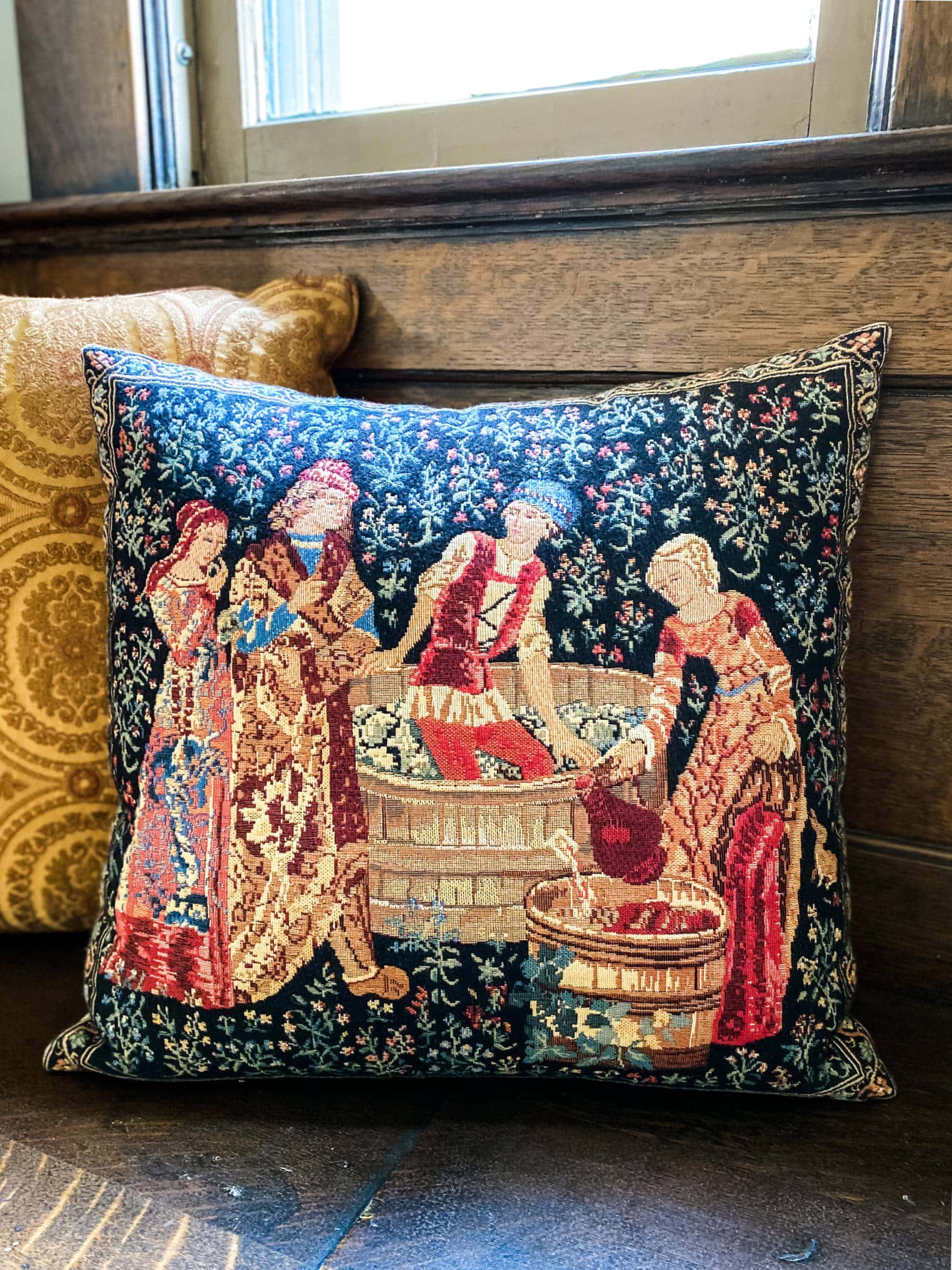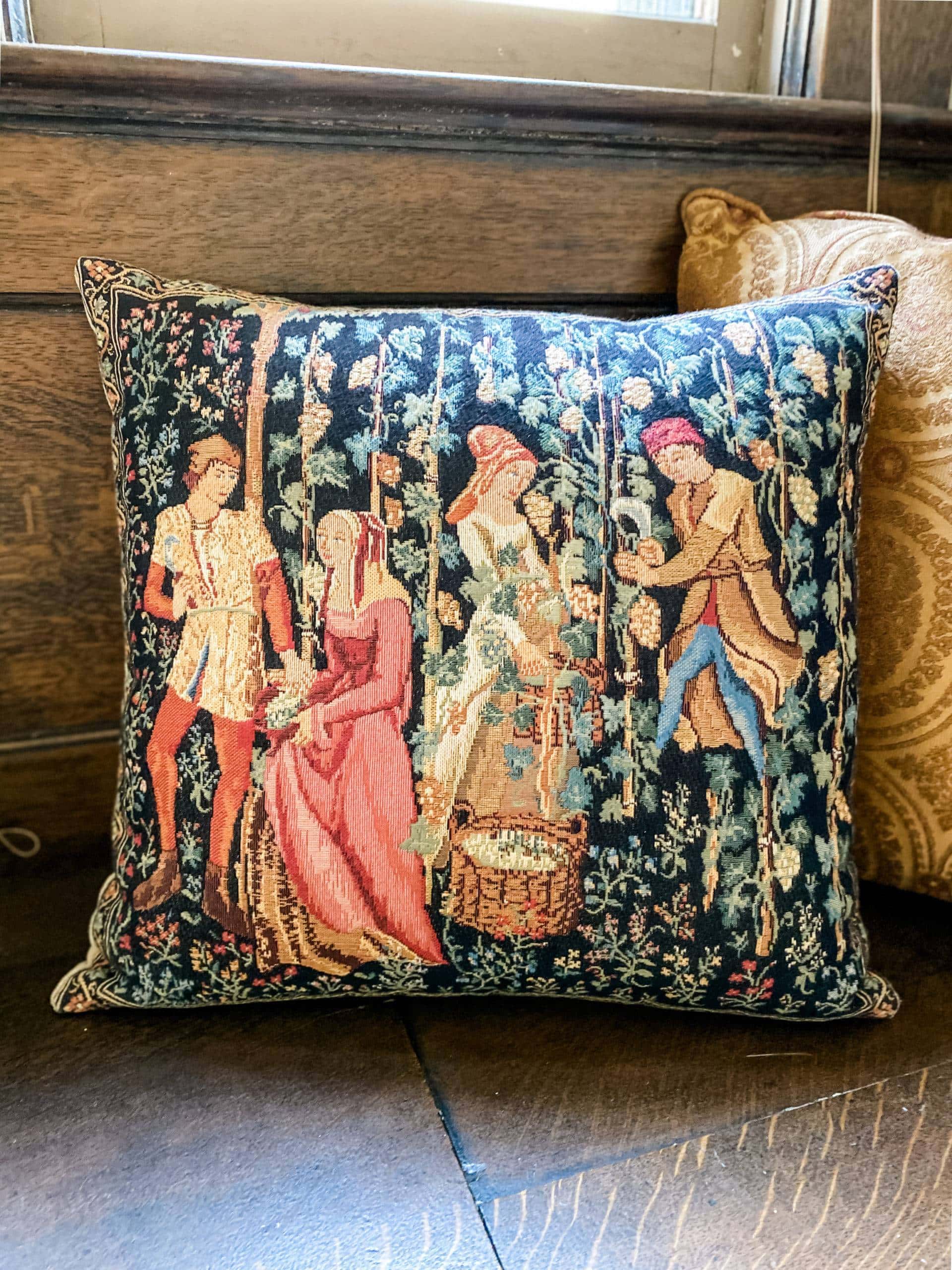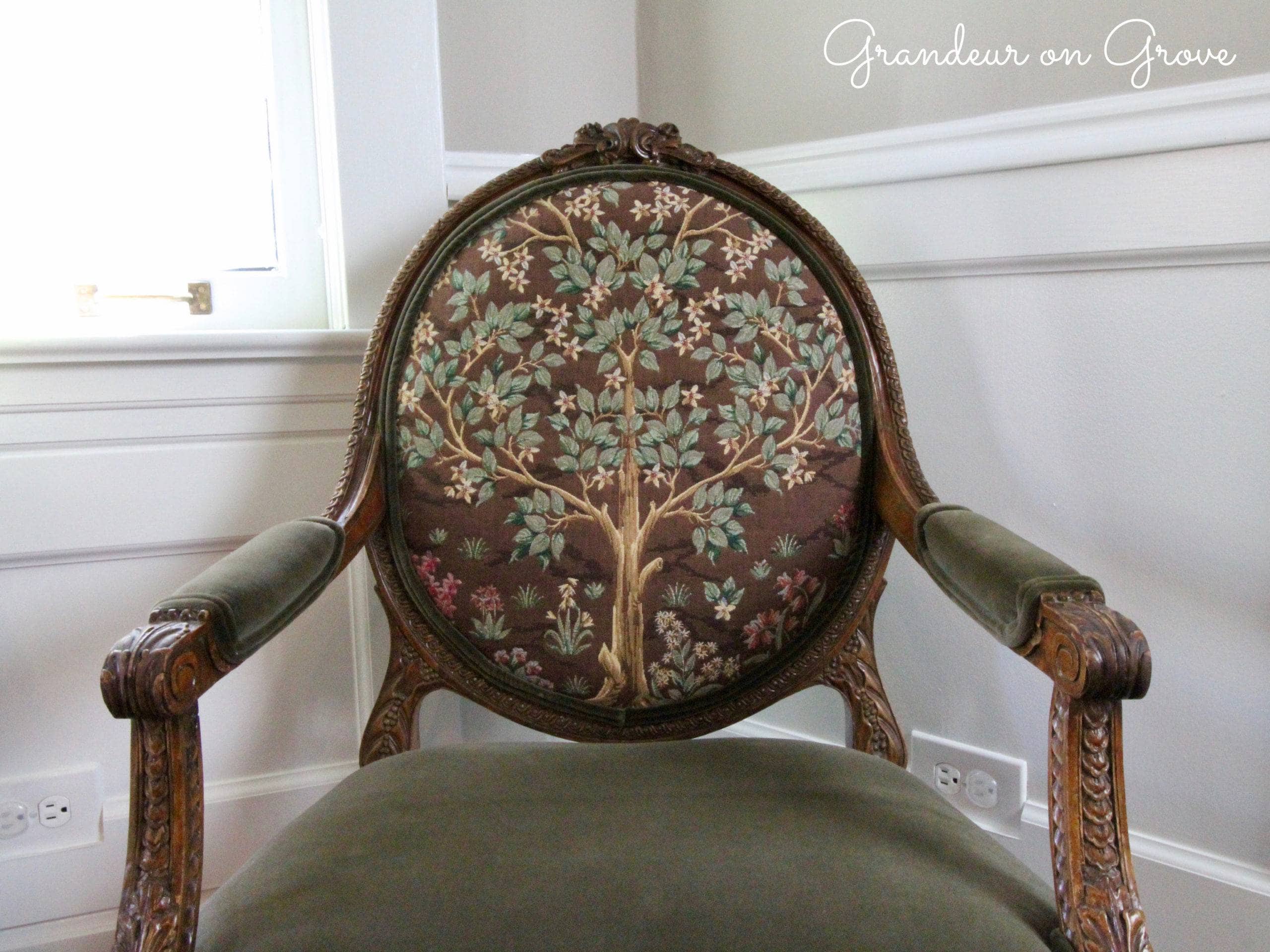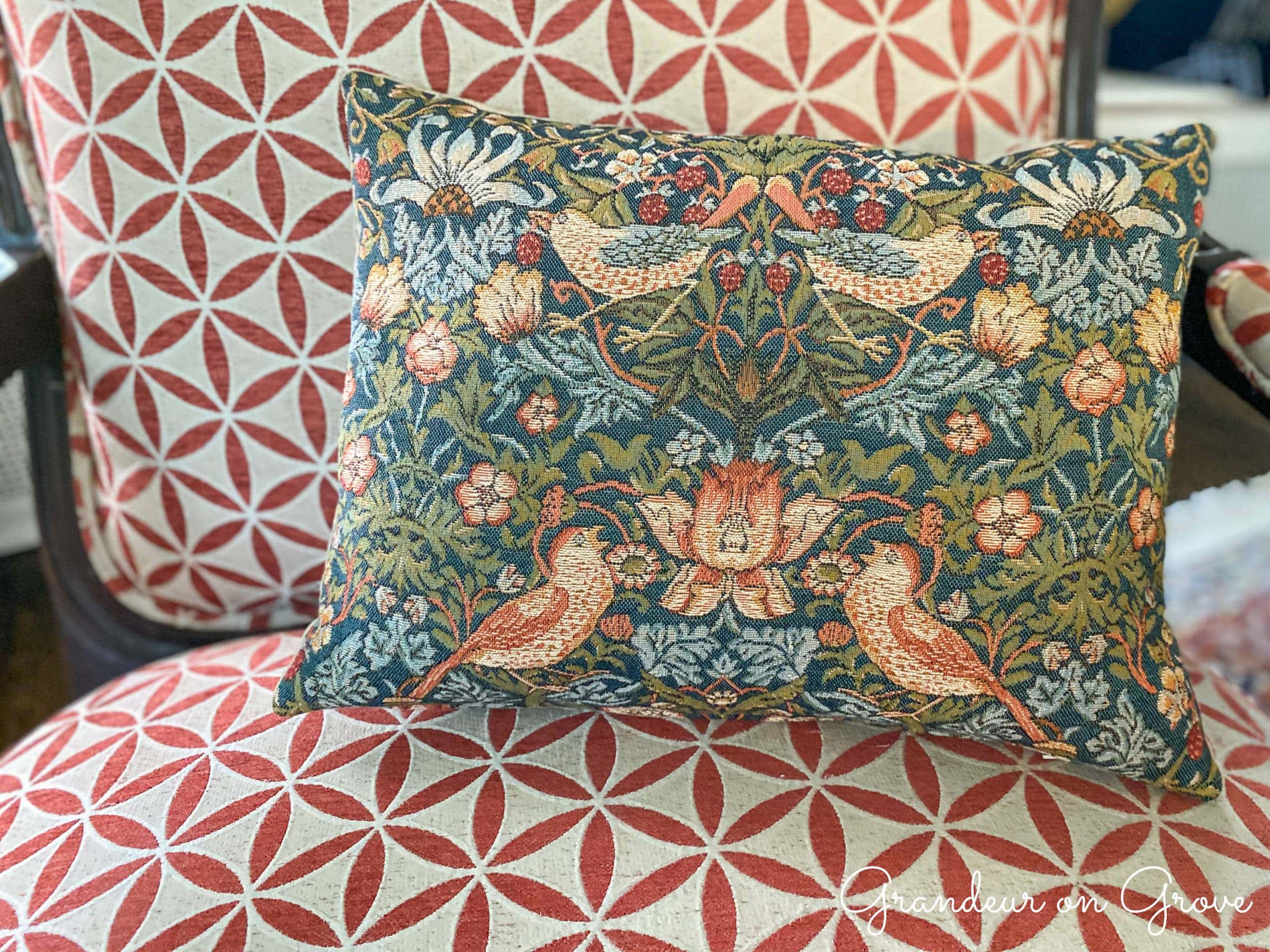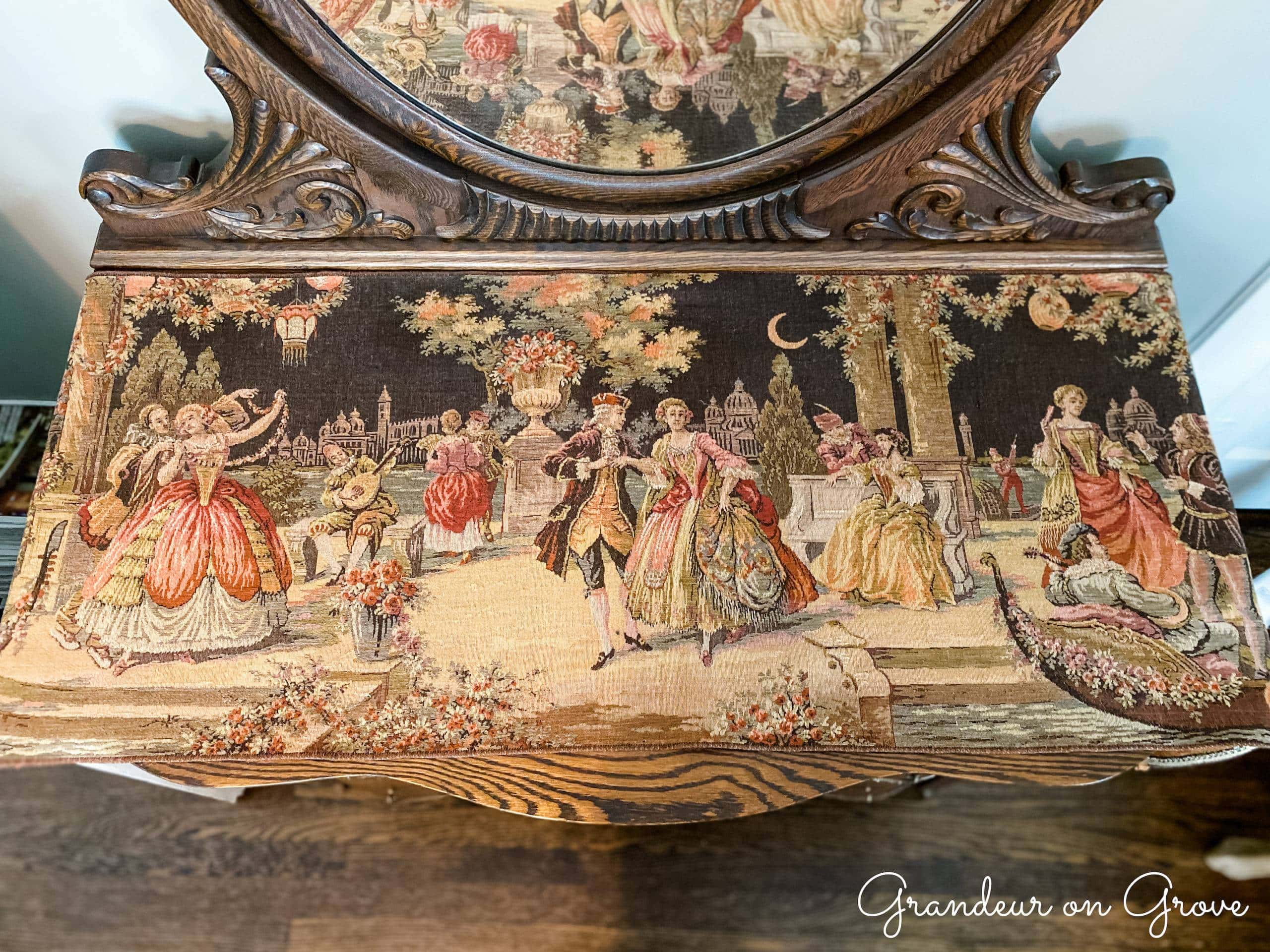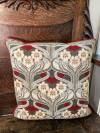A Short History of Tapestries
Tapestries are heavy textiles of wool or cotton woven in an artistic pattern that produces a picture. I’m focusing on tapestries from the European Medieval period through the Arts and Crafts era. Some tapestries were made as stand-alone pieces, while, historically, others were part of a six- to twelve-panel set. Tapestries were used as wall hangings, especially in stone-walled castles, churches, and manorial homes. They were a showcase of wealth and decoration but were also used to tell stories, keep out cold drafts, and adorn altars. Easily rolled up and carried from place to place, individuals often traveled with their tapestries. Because they are a heavy material, they have also been used to upholster furniture such as stools, settees, chairs, and bed canopies.
Common themes depicted in tapestries are biblical scenes, the retelling of historical events, and allegorical storytelling with moralistic themes. These scenes often include mythological creatures, symbolic items, and pastoral landscapes. The people in tapestries might be hunting, gathering or making food, having picnics, preparing for battle, lounging in nature, or communicating in groups. Tapestries that replicate famous paintings or show plants and animals are also popular.
Tapestries have been made and used since ancient times by the Greeks, Romans, Egyptians, Syrians, Chinese, and Incas. In the late Middle Ages (1300-1400s), tapestries gained popularity among royalty and members of the ruling class across Europe and the most prized versions were woven with threads of gold, silver, and silk. At that time, they were made in Germany, Switzerland, France, the Netherlands, and Belgium. In the 1500-1600s, tapestries were primarily made by companies in Belgium and France. Different techniques for making tapestries were pioneered by manufacturing companies over time. The use of tapestries for interior décor was revived in the 1800s by William Morris, who started manufacturing his now-ubiquitous Arts and Crafts designs in England. Today the majority of tapestries continue to be made by Gobelins Manufacturing in Paris, France, and in various parts of Belgium.
Here are some European tapestries I’ve visited:
How I Use Tapestries
I’ve been slowly accumulating reproduction tapestries for my home, picking up one or two when we visit family in Europe, and purchasing them on Ebay, at flea markets, and through other online shops. In writing this article, I realized that I now have twenty-one tapestries in my house! Many are throw pillows, but there are also many wall hangings, including two bell pulls. Rounding out my collection are a table runner and one framed art piece. These tapestries are my favorite way of showcasing European influence on my traditional style.
In addition to bringing an atmosphere of European grandeur, I appreciate the artistry that goes into designing a tapestry, the texture and color they bring to a room, the sense of history and gravitas they convey, and the natural elements they depict. I’ve previously discussed my interest in Tree of Life symbolism, as commonly depicted in tapestries. In addition to my medieval reproduction tapestries, I like to bring period-appropriate designs into my 1906 house. That includes the beautiful tapestry designs of William Morris and the Arts and Crafts movement. Below, you’ll see many William Morris patterns, including the Tree of Life, Strawberry Thief, and Acanthus. Lastly, I enjoy tapestries because their thick textile weave used as tapestry pillows and upholstery are a durable, long-term investment.
For more tapestry inspiration, check out Grandeur on Grove’s Tapestries board on Pinterest. While you are there, follow all of Grandeur on Grove’s Pinterest boards.



